How do you teach a HyFlex course when the number of students in various participation modes is very unequal? How do you teach one student in a mode – often in the classroom? Conversely, you could ask how do you teach 50 asynchronous students with very few in the synchronous mode(s)? Answers will vary greatly depending from teacher to teacher. This article suggests a strategy called Course Awareness, a mindfulness technique designed to help teachers envision each learner as being in the instructor’s presence and engaged in the instruction regardless of participation (or attendance) mode choice.
HyFlex course design, although not new, is now one of the hottest trends in higher education. Educational institutions at many levels and of many types (universities, colleges, trade schools, K-12 schools) are scampering to frantically implement the model, installing new, high-fidelity resources and equipment within classrooms and hastily developing faculty to implement the triangulated modality. In this haste, gaps can arise in training, and in the midst of implementation, educators may uncover new challenges to overcome. One such challenge is teaching equitably across the three modalities. But when there is only one student in your face-to-face mode, how do you develop equitable relationships and engagement, striving for a similar connection with the online students? We believe the key to overcoming this challenge is found in course awareness.

What is course awareness? Much like self awareness, course awareness is having the ability to clearly and objectively reflect on each component of the course with the goal of ensuring all learners are equitably supported and engaged. This aligns with opportunities for interaction with content, the instructor, and with each other. The ultimate goal in exercising course awareness is ensuring an equitable learning experience that will promote successful performance and completion of the course. In a HyFlex course, this awareness must be a key component in every facet of design, development, and delivery of instruction.
Considering course awareness and student choice of attendance, there can be times when instructors encounter a lone student, both online and face-to-face. For most of us, this poses a real challenge for delivering an engaging lesson, because engaging activities are generally collaborative. I mean, how do you engage one student in collaborative work when that student is the only one in class? Believe it or not, it can be achieved by introspectively examining the course and exploring differentiated learning activities.
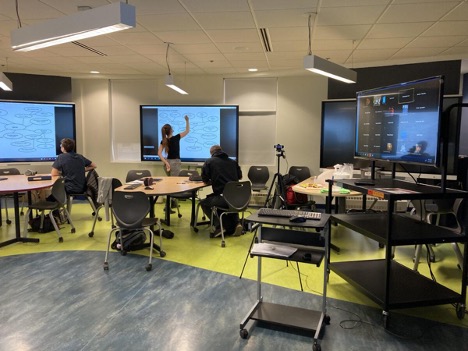
One course awareness strategy I have developed is to see the entirety of the course through the content, modalities, learners, and instructor. It views the course from a holistic perspective and as one functioning entity composed of all required parts. As an instructor, I acknowledge the three independent participation modalities yet inclusively teach them as one. During class, I constantly and consistently call out each modality and draw attention to the specific strategies each should consider. Face-to-face learners are encouraged to engage with the synchronous online students through a mobile device, the LMS chat feature, and in-class discussion forums. This connects students in each of the modalities in real time.
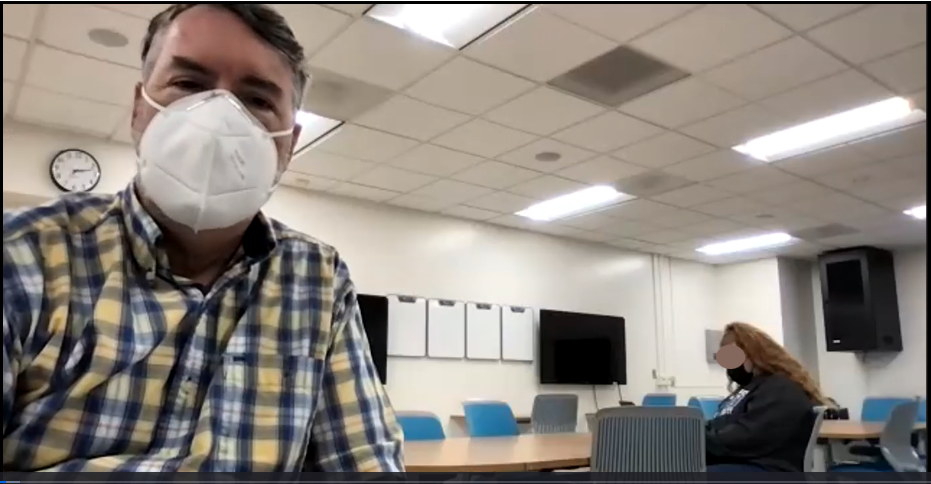
Because asynchronous students have chosen to participate at a different time (often watching the recorded lecture) and complete other out-of-class assignments, it may seem they miss out on beneficial class engagement. Being aware of the threat of missing out on instructor and student engagement, instructors can intervene and proactively execute instructional strategies to prevent it. By seeing the three modalities as one course, the instructor can direct both online synchronous and in-person students to pose questions to asynchronous students via a web-based tool, like Flip, Mentimeter, or via the LMS discussion forum. During lecture, instructors will speak directly to the asynchronous students, instructing them to engage with the comments made by their classmates. This strategy serves to connect all learners in one course, ensuring there are no lone students adrift, feeling disconnected and disengaged.
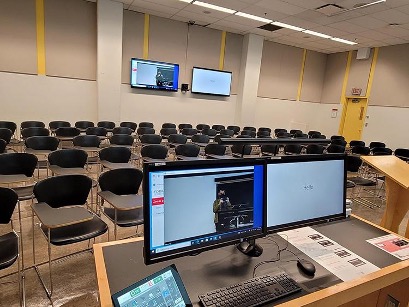
But what if there is only one student present, either face-to-face or online? [This has happened several times to us in our own classes in the past couple terms.] How does this one-course awareness ensure the asynchronous students obtain an equitable experience, and how do you teach only one in-person student or even only one online synchronous student?
The answer is rather simplistic, yet imaginative; when the large majority of students are participating asynchronously, you teach to your asynchronous learners (or at least so they perceive you are speaking to them directly in the video) and consistently and frequently speak directly to your face-to-face student. You might consider this the flipped model of teaching a HyFlex course. Strategically, you need to employ web-based resources designed to gather real-time information over a specified period of time, capturing all students and not just students engaging live. For example, Mentimeter, PollEverywhere, and Sli.do allow the instructor to pose engaging, interactive questions without limiting engagement time to the instance the question is initially posed. These tools are designed to support both synchronous and asynchronous participation. Both the face-to-face learner, synchronous learner, and the asynchronous learners can access the question and offer their answers and opinions, equitably. The teacher must carefully craft the questions (and other information) to work well in this “bichronous” context.
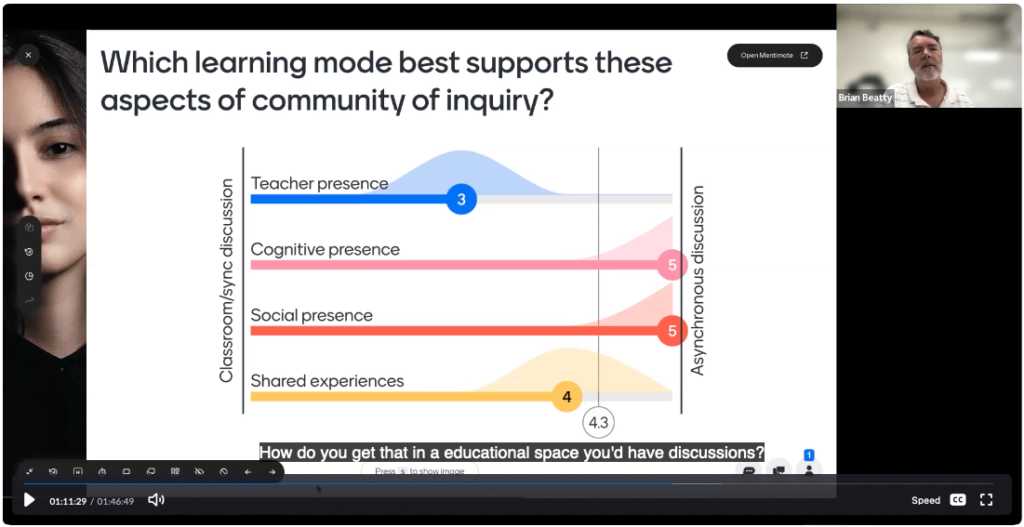
Another resource useful for students in all modes is anything collaborative using the Google Suite of Apps. Shared documents started in the synchronous session can easily be contributed to by asynchronous students later. Once again, the document and task for student participation should be carefully designed to be meaningful for both synchronous and asynchronous students.
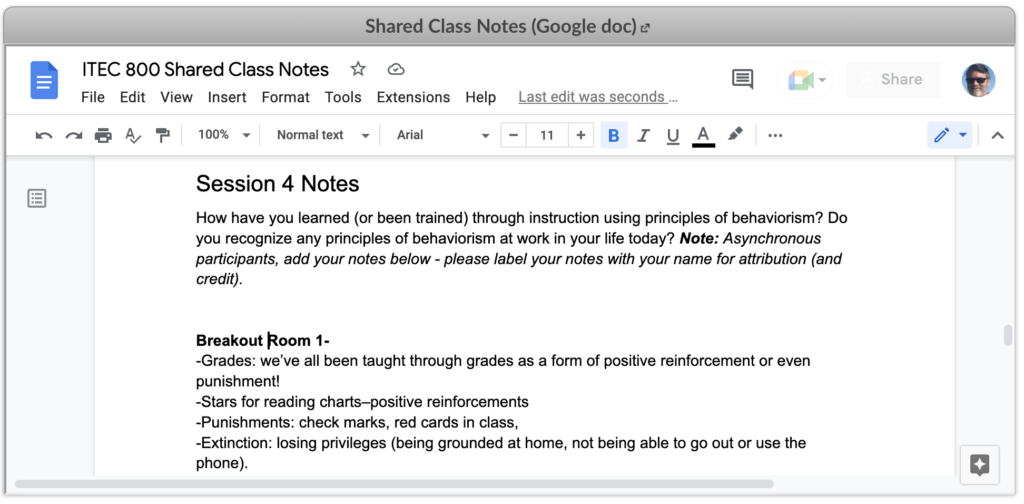
The point is, whatever engagement resource you choose, ensure that all learners have the opportunity to share their opinion and voice within the resource, make it meaningful to their course learning experience, and without requiring a significant amount of extra effort to do so. In fact, for major concepts and topics, you’re likely to require them to engage and offer their insight surrounding the information. It takes an innovative teacher mindset to think through multiple course modalities and see one holistic course, but the reward of the effort is a high-quality opportunity to learn provided to students who might otherwise never be able to complete the course.
This is, after all, one of the main reasons we choose to teach using the HyFlex approach, isn’t it?
[…] Course Awareness in HyFlex: Managing unequal participation numbers — from hyflexlearning.org by Candice Freeman […]